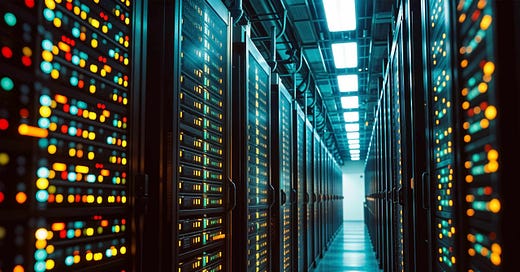It’s becoming increasingly clear that the future of AI can be clean. There are a growing number of tools in the regulatory toolbox that can be mixed and matched to create cheap, clean, reliable energy for the grid to address the demand growth from data centers.
Over the last few months, there have been three notable reports released on new and distinct tactics that regulators can use to add clean energy to the grid, while maintaining reliability and low cost. These reports provide different approaches to adding more capacity to the electricity system to offset data center demand growth – or to directly reduce demand from the data center – all resulting in improving the grid with clean energy.
First, addressing demand
Everyone agrees, we need more electricity, but just how much by when remains an open question. Electric Power Research Institute (EPRI) projections illustrate this uncertainty, as 5-9 percent of U.S. electricity demand will be used by data centers in 2030 (up from 4 percent today). Other data center power demand projections, like those from Goldman Sachs and McKinsey, forecast a 165 percent increase in global data center power demand by 2030, which account for about 4 percent of power demand in the U.S. While this is a substantial increase, demand projections have been wrong before, so each of these forecasts should be taken with a grain of salt.
Considering this uncertainty, utilities must pursue least-regrets solutions with consumer protection front of mind. For example, utilities and regulators should require new customers to provide significant assurance they will pay for the costs of accelerated investment. And for those seeing a crisis-mentality overcoming the industry, let’s not forget that utilities have every incentive to project potential load growth to justify the capital investment that creates value for their shareholders.
Rethinking Load Growth
In February 2025, Tyler Norris from Duke University’s Nicholas Institute, released Rethinking Load Growth: Assessing the Potential for Integration of Large Flexible Loads in U.S. Power Systems. The report argues that strategically incorporating flexible loads into the grid can alleviate stress on the power system. Utilities can increase grid flexibility by allowing large load consumers, like data centers, to curtail their energy usage by shifting workloads or utilizing some on-site generation during peak demand periods. The report also found that while some data center tasks may need immediate baseload power, many functions, especially model training, can be scheduled or shifted between fleets of data centers. A small increase in flexibility from the data center can substantially decrease the impacts of new demand on the grid.
Their research found that the majority of U.S. balancing authority areas – which makes up 95 percent of U.S. load – could accommodate 76 GW to 126 GW of new loads if data centers accepted curtailment for 0.25 percent to 1 percent of their annual generation, respectively. In other words, they would still receive 99-99.75 percent reliable service. This would be enough to meet even the highest-end projections for demand growth by 2030.
Surplus Interconnection Report
UC Berkeley and GridLab released a complementary report that examines the barriers and opportunities associated with surplus interconnection. Surplus Interconnection allows new power generation and storage resources to connect to the grid faster and at lower cost using existing infrastructure at underutilized power plants. Today, rising interconnection costs and ever-growing study timelines are a principal barrier to new energy deployment. The current interconnection process takes 2-5 years on average.
They show that leveraging the benefits of surplus interconnection can bring 100s of GW of new cost-effective wind, solar, and batteries online quickly, improving system reliability while lowering emissions. Updating market rules, improving coordination among grid operators, and streamlining interconnection processes could unlock 977 GW of renewable energy potential near existing fossil plants by 2030. If integrated, this clean energy could nearly double the U.S. generation capacity and addresses the urgent need to get more power – notably clean energy – on the grid to meet data center demand.
Energy Parks Report
Energy Innovation recently released the Energy Parks: A New Strategy To Meet Rising Electricity Demand report. The concept of "energy parks," integrates multiple renewable energy sources, storage solutions, and co-located energy consumers, such as manufacturing facilities or data centers, into a single interconnected hub. These parks provide large electricity consumers with direct access to low-cost clean energy while offering flexibility and resilience to the broader power grid. Similar to surplus interconnection, it’s a way to increase cheap power on the grid quickly by aggregating clean energy.
Properly integrating co-located resources in an energy park can enhance overall electricity market efficiency, reduce costs, and accelerate the clean energy transition. It’s also a good opportunity for investment in communities dependent on coal power for tax revenue and employment. While there are regulatory challenges for Energy Parks, including the uncertainty around the rules for co-located load, they have the potential to accelerate the development of cheap and reliable clean energy.
Where do we go from here?
Each of these strategies can work together to increase energy production or grid capacity in response to rising electricity demand. They are not exclusive of other innovative approaches, such as clean transition tariffs, which also deserve policy attention. But we’re not stuck using conventional approaches – innovation is required to meet the dual challenges of growing load and clean energy economics. These are tools policymakers and utilities should pursue if they want to attract new energy demand to their state.









